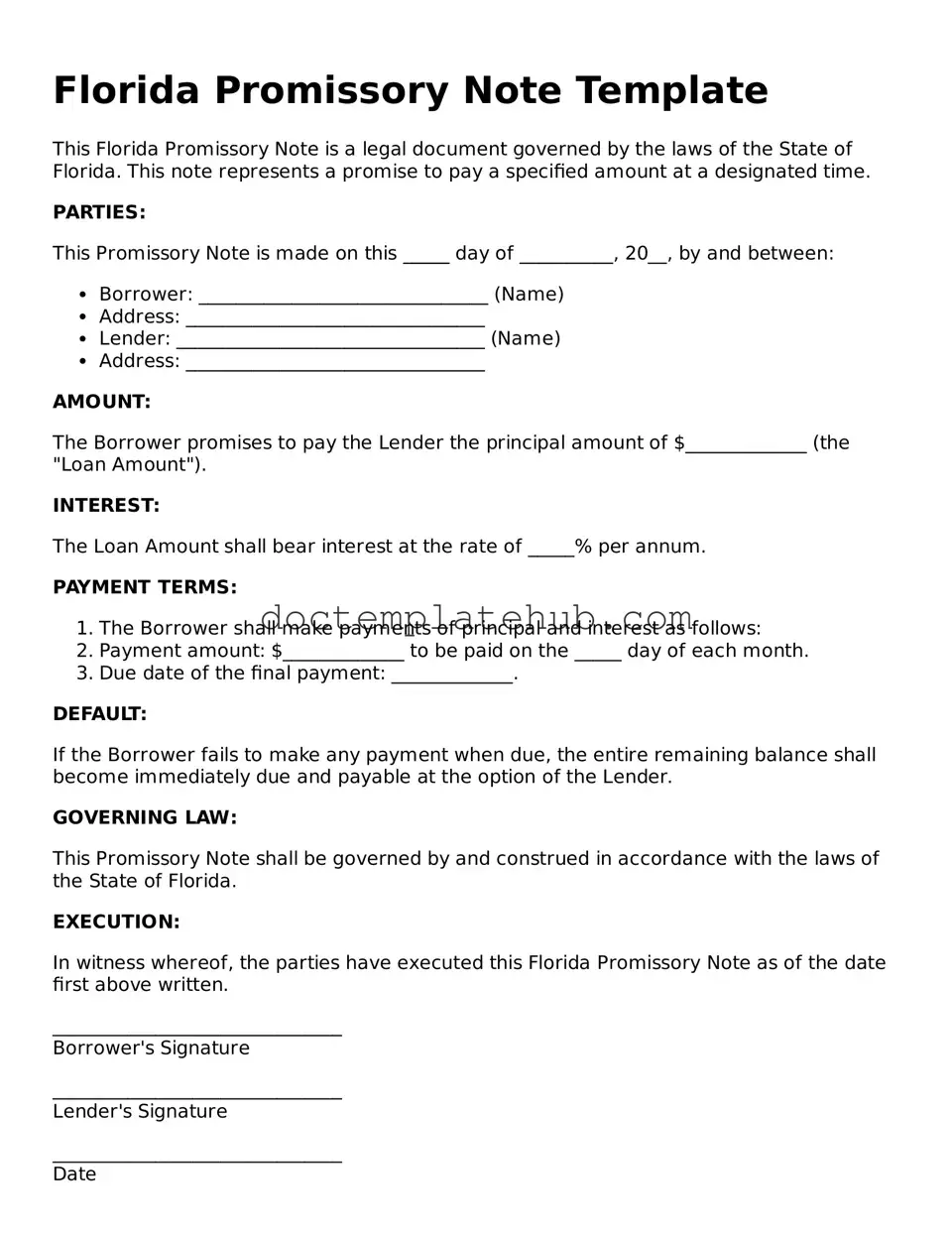What is a Florida Promissory Note?
A Florida Promissory Note is a written promise to pay a specific amount of money to a designated person or entity. This document outlines the terms of the loan, including the amount borrowed, interest rate, payment schedule, and any penalties for late payments. It serves as a legal agreement between the borrower and the lender.
Who can use a Promissory Note in Florida?
Anyone can use a Promissory Note in Florida, whether you are an individual lending money to a friend or a business providing a loan to a customer. It’s important for both parties to understand the terms and conditions outlined in the note before signing.
What are the key components of a Florida Promissory Note?
A typical Promissory Note includes the following key components: the names of the borrower and lender, the principal amount, the interest rate, the repayment schedule, and any late fees or default terms. It may also include provisions for prepayment and any collateral securing the loan.
Is a Promissory Note legally binding in Florida?
Yes, a Promissory Note is legally binding in Florida, provided it meets certain requirements. Both parties must agree to the terms, and the note must be signed and dated. If the borrower fails to repay the loan as agreed, the lender can take legal action to recover the amount owed.
Do I need a lawyer to create a Promissory Note?
While it is not required to have a lawyer draft a Promissory Note, consulting one can help ensure that all legal requirements are met and that the document protects your interests. Many people choose to use templates or online resources to create a basic note.
Can a Promissory Note be modified after it is signed?
Yes, a Promissory Note can be modified after it is signed, but both parties must agree to the changes. It’s best to document any modifications in writing and have both parties sign the updated agreement to avoid confusion later on.
What happens if the borrower defaults on the Promissory Note?
If the borrower defaults, the lender has several options. They can demand full payment, charge late fees, or take legal action to recover the debt. The specific actions available depend on the terms outlined in the Promissory Note.
Are there any tax implications for using a Promissory Note?
Yes, there may be tax implications for both the lender and borrower. Interest income earned by the lender may be taxable, while the borrower may be able to deduct interest payments if the loan is used for certain purposes. It’s advisable to consult a tax professional for specific guidance.
